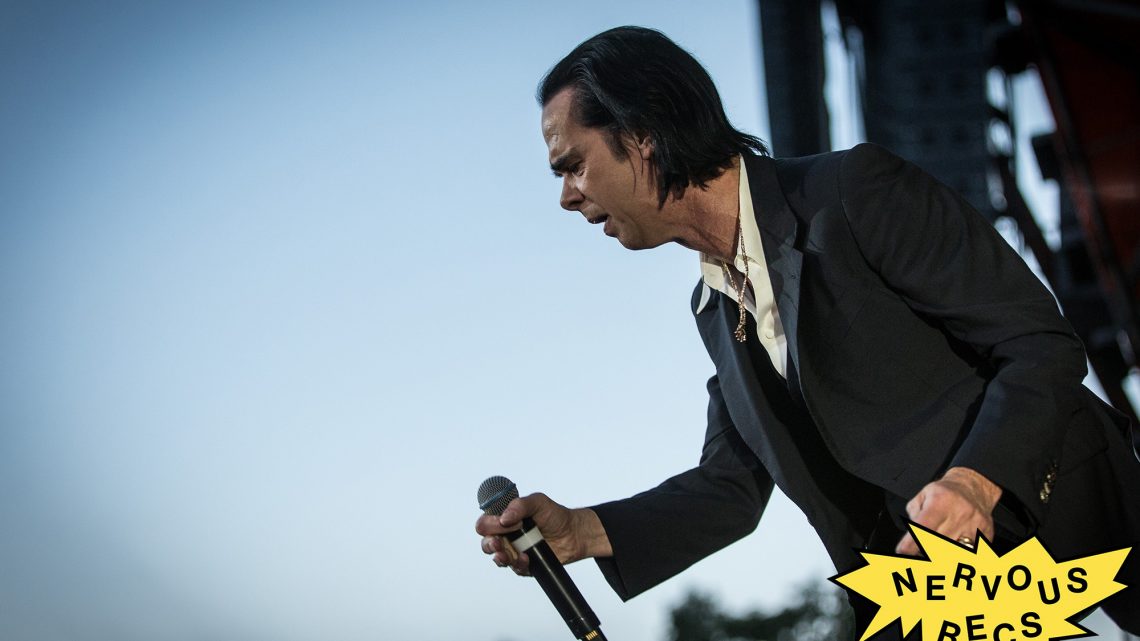
Nick Cave’s New Book Introduced Me to a Dreamy Realm of Imagination
April 27, 2020For a few years, the auction house Christie’s held a yearly sale called “Out of the Ordinary,” devoted to its most unusual offerings: a taxidermied two-headed Welsh lamb; a lush, hand-painted sign of a performer from a mid-century carnival freak show; a photographic mosaic of the surface of the moon, showing its landscape in craggy, disorienting detail. But what price could the auctioneers possibly put on this moment, an entire world made strange and unfamiliar?
Living through a pandemic is permanently, if subtly, disorienting, something most akin to homesickness. The world most people knew has receded, and we find ourselves on this unwelcoming ship together for a voyage with no discernible end. It can feel like living inside the confines of an exceedingly small plot of land bounded by an invisible electric fence; trying to do almost anything will bring you into sharp, shocking contact with the new limits of a remade world.
I have certainly never felt so peculiarly confined, so immediately hemmed in by my circumstances, without the ability to travel safely, to plan for the future in any meaningful way, to put a date or a time on when I can hold my friends’ children again or sit at a kitchen table with my family. In the Old World, I was rarely home for more than two weeks at a time. In the first days of being landlocked, it felt like a novelty to wake up in my own bed, to get my clothes out of the dresser rather than a suitcase. That novelty faded quickly. Now, there are days when being at home—making soup, baking bread, going on a modest bike ride around my neighborhood—feels like enough. There are others—blessedly rare, but still, often enough—when it feels intolerable.
This level of boredom is, of course, a privilege, one that’s not available to essential workers who face the terrors and tragedies every day of being on the front lines, whether that’s at a grocery store, at a hospital, or clinging to the back of a sanitation truck. Nonetheless, the feelings that confinement brings are real, and can be distressing. When your wings start fluttering too insistently against the cage, there are reliable ways out: drugs, alcohol, sex, meditation, or, in my case, library books, which I’ve been anxiously zooming through on an ancient tablet that freezes every few pages. It’s a relief to collapse into a real, actual, flesh-and-paper book, but my concentration is not, at this moment, particularly strong, and the ability to sit with a non-electronic object seems to be especially difficult.
This is why it felt like an extravagant gift from my past self when Stranger Than Kindness showed up in the mail. It's an odd and substantial object—part art book, part memoir, part jigsaw artifact—by and about Nick Cave, designed to complement an exhibit about his work at the Royal Danish Library in Copenhagen. (The exhibit is described by the curators as eight rooms devoted to “a spatial, multi-sensory exploration of his many real and imagined universes.”)
Like everything else, the exhibition is now indefinitely postponed, but the book more than stands on its own. Cave, who fled Australia for London and Berlin as soon as he came of age, became famous for his work with the Birthday Party and then the Bad Seeds, which quickly became two of the most influential post-punk bands in the world. That vague descriptor doesn’t do much to describe their appeal, a crashing intersection at the crossroads of brooding, gothic imagery and music that’s by turns mournful, savage, and lustful.
Cave has become known as the towering king of snarling melancholy, and Stranger is a pastiche that seems to get at his essence. It features his lurid, bizarre, beautiful, touching artwork and handmade books; photos from his life; and notebooks and scraps of paper that show him puzzling out his most famous songs, showing little glimpses of alternate history, verbal garden paths he chose not to go down (what if the tender, spiteful love song “Far From Me” had gone a little further, describing a departed lover as running like a dog?). It has moments both high and low: The handmade books often have a religious element, the Madonna and Child featured over and over, but there’s also a hand-drawn flyer of Cave as a nude, penitent, weeping, anatomically correct angel, clearly from his famed wilder years, advertising a shirt he sold to pay the damages for a hotel room he apparently wrecked.
All of that would be absorbing for a Cave devotee, as I clearly am. But anchoring the book, and giving it far broader appeal, is an exquisite, winding essay by the American novelist Darcey Steinke. The essay is, simply put, extraordinary, particularly for anyone who does any kind of creative work. It’s not entirely—or even mostly—about Nick Cave, but instead begins with Faulkner, and takes detours through Elvis and Graceland, Johnny Cash, sin, angels, Jesus, and resurrection day before landing, gracefully and sideways, into Cave’s work.
Steinke has otherworldly gifts, lighting endlessly worn-out things—Graceland, for instance—in absolutely new ways. Of the house itself, she writes, “In Graceland, light seems to come at you from all directions, as if the sun has liquefied and flowed into the floor, walls and ceiling. I recognised in the glittery decor a longing for transcendence that is often labelled as tacky. The mirrored bar in the downstairs TV room was like a fenestral opening, the kind I spent most of my childhood searching for, that soft spot in reality that linked this world to the next.”
That line stopped me short as I sat at home one night, not long ago. That description, a “fenestral opening” linking “this world to the next” is the closest I’ve ever seen to a description of something I’ve fumblingly tried to describe as “the other room,” a strange next place I can only fleetingly see and have an even harder time describing. Intimations of it sometimes come to me when I’m writing, or reading something that uses dense, descriptive, visual language. It’s something like a dark field that I can only see through a crack in the door, a great, wild, mysterious Outside far beyond my own reach or understanding.
It’s enormously helpful, at this precise moment, to steep myself in something that reminds me of that other room, that next place, those soft openings in the known universe. It’s a place that writers and artists of all kinds reach for, and the reminder that it’s there is both reassuring and exciting, a kind of map at a time when absolutely everything in life feels map-less. I bought an expensive art book from a musician I like; what I got was a kind of compass leading me through a weird and often bleak time.
At a moment when everything feels both stagnant and uncomfortably unfamiliar, the solution, perhaps, is to lean into that unfamiliarity, to try to dig deeper into a place of fertile strangeness, a rich state of subtly altered, heightened consciousness. In other words, imagination is a balm, a way to pass the time by growing new fertile jungles in my subconscious, rather than panic-scrolling on Twitter. Anything that helps access imagination is a trapdoor in the floor beneath the rug, a secret passageway, a hidden staircase leading us up and out into a wider, wilder, abundant world. But the location of those secret passageways changes, again and again; finding their new place in your heart and mind and consciousness is the work of a lifetime, and will remain long after this crisis is over.


